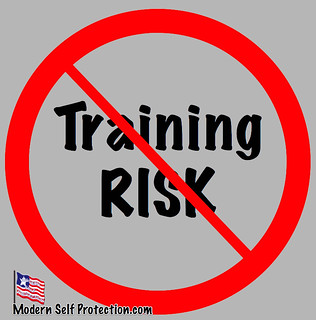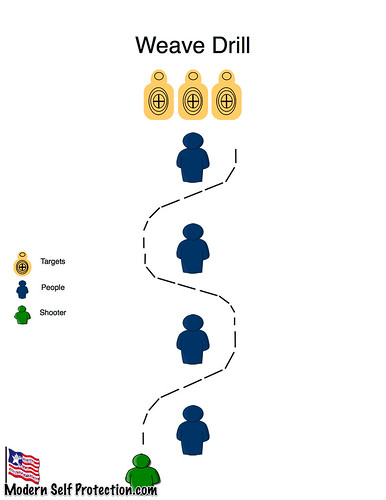
I just finished a class with Frank Sharp at Fortress Defense. It was a great course. I had a good time, met some great people (both instructors and attendees), and learned some things. Frank created a good balance between safety and training, and started the class with a great discussion on true safety (not just on the range, but in the real world). It started me thinking about the risks of shooting and the rewards it can bring. Everything we do in life has a risk. Complete safety is an illusion. There have been people killed in their bed at night and killed in their front room by a car driving through the wall. Carrying a gun, training with a gun, and having guns bring risks. Driving or riding in a car is risky, riding a motorcycle is more risky. None of these risks are unmanageable, but we can be more careful around these things. I wear my seat belt when I’m in a car and a helmet when I ride a motorcycle.
When I was a contractor and worked as a “Force Protection” specialist (which means I did base security), a lot of the military leaders kept saying they wanted to have zero risk to their soldiers. An admirable goal, but we lived in a combat zone and there was no way to have zero risk. Everyone carried a rifle and ammo at all times, people were actively trying to get on the base and kill the soldiers, and mortar/rocket attacks were normal. Having zero risk was not doable. You might think, well just don’t let anyone on the base, but a lot of locals were contracted to work on the base doing jobs like trash removal, cleaning restrooms, and building infrastructure (lights and rooms) that the soldiers didn’t want to do. When I suggested we keep all those people out to cut down the risk, the leadership said we couldn’t do that. That normally started a good conversation about what could be done to lessen the risks.

When you do training, there should be a reward for your risk. The more risk, the more reward there should be. Some trainers have people do things just because they can, claiming no one else does this. They are correct because the risk is not worth the reward. The drill that makes me cringe the most is having cameramen down range standing next to targets while students are shooting drills at the target they are standing next to. Yes, with trained operators, the risk is less, but what is the reward for having someone down there? A good photo? I can set up a camera remotely and get that without having someone down range
As your training progresses and you get more and more real life scenarios and you start setting up your own training, look at your risk versus your reward. Doing a weave drill with people firing around people may not be enough reward for the risk. I can use barricades to get the shooter moving the same way with virtually no risk to other shooters. If I want people to feel what it’s like to have weapons fired in close proximity to them, I can have them stand on line and a shooter stand near them and fire the rifle, cutting down the amount of risk to all.
I don’t mind the weave drill with an unloaded weapon (all firearms safety rules still apply) or with a loaded weapon where there is no shooting and the shooter always keeps the weapon pointed down and isn’t moving it. Doing the weave drill these ways simulates everything we are trying to accomplish with this drill, but keeps the risk to others way down.
When you go to a class, training event, or create your own training, think about what you are trying to accomplish with the drill and is there a way we can accomplish the same thing safer? Also, ask yourself is the risk of this drill worth the reward/training value? I personally would not be involved in any way with someone that has a cameraman standing next to the target students are actively shooting at. You have to make your own decisions.
Stay Safe,
Ben
So Ben, as a trainer, would you recommend that if during a class a student is asked to do something unsafe like the example you gave, would you recommend the student just leave the class altogether or ask not to participate in that specific drill because of safety concerns?
I’m not really sure what I would do. It depends on a lot of things going on. I’ve done things that would be considered pretty unsafe. It depends on whom I’m training with. When I’m training with top level operators that have proven themselves during previous training sessions I’d go a lot further then if it was someone I didn’t know off the street. I would at least refuse to do the drill and may leave depending on what the class is for. If I’m just there for fun, I might stay and continue during safe drills. If it’s a qualification to go someplace or do something else, I’d probably stay. If I could get a refund I’d probably leave. It’s hard to stand up and say something isn’t safe, and then stick to it. Have a plan, I went to this class not knowing anything about the instructor and was fully prepared to go to the bathroom during an unsafe drill and talk to the instructor about it. A couple months ago there was just an instructor shot during training, it doesn’t happen often, but it does happen. It’s your life and your choice. At the very least ask the instructor to explain the safe guards set up and what will be gained by the drill. Then make your choice. The instructor might have safe guards put in place that you don’t know, and there may be a good reason for the drill. It may be expectable after an explanation.